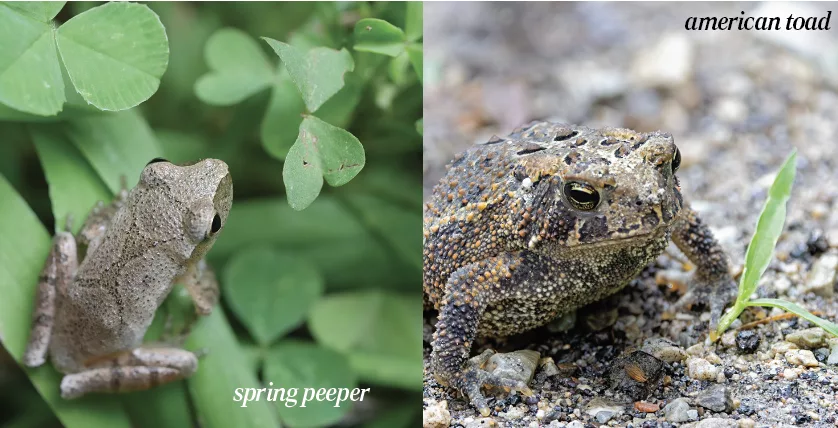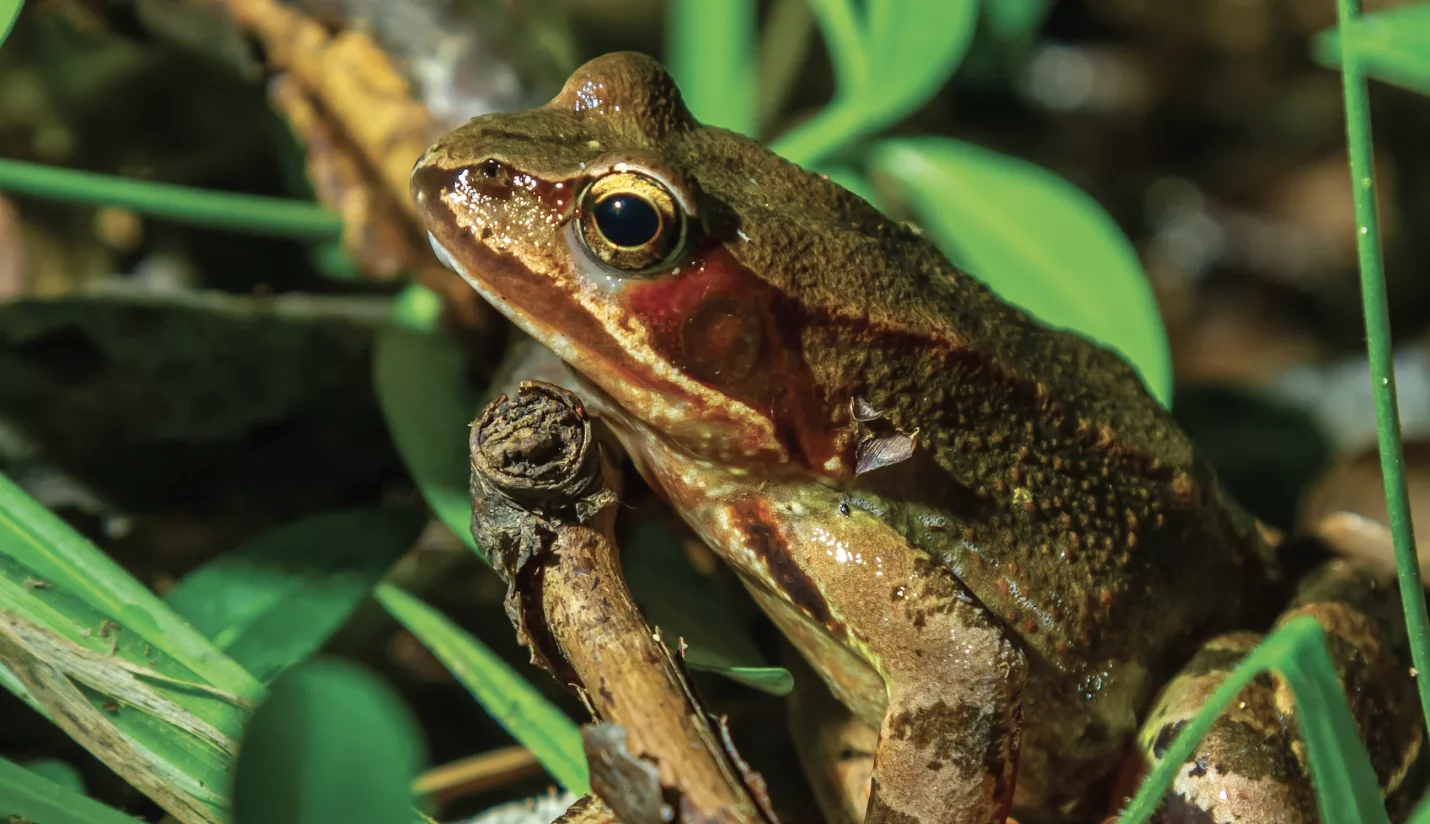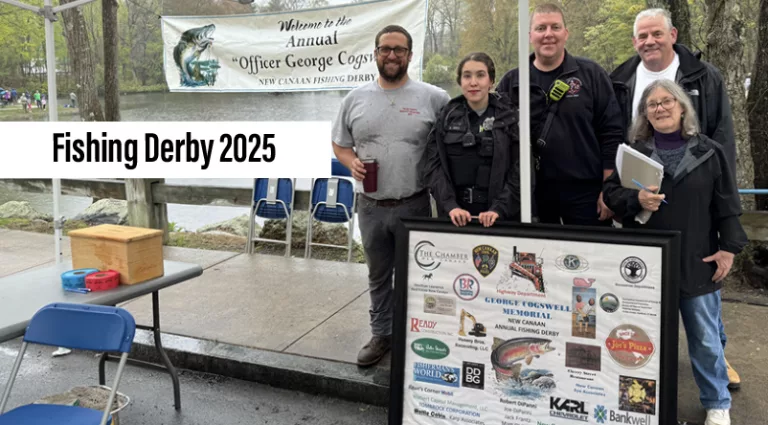
By Frank Gallo
“Peep, Peep, Peep, Peep, Quack, Quack, Quack, Whirrrrrrrrrr…” The cacophony is almost deafening. It’s late March and this exuberant symphony emanates not from within an avantgarde orchestra pit, but rather an inky black forest puddle – the utterances of hundreds of amorous amphibians…
What I am observing within the wetter recesses of the forest is the ancient mating rituals of spring peepers (Pseudacris crucifer), wood frogs (Lithobates sylvaticus), and American toads (Bufo americanus).
Wood Frogs begin the Spring symphony, often emerging from winter dormancy (brumation) in late February, when snow is still present. They are quickly joined by spring peepers, whose surprisingly loud voices belie their diminutive 1.5” stature. A single male peeper can emit 90 decibels of sound – think revving motorcycle at 25 feet. The sound can travel for hundreds of yards, especially at the height of the breeding season in March and April. American toads arrive at the pools in late March or early April to add their voices to the chorus, rounding out the early Spring refrain.
It is the males that are making noise to beat the band. The spring peepers “peep”, the wood frogs “quack” like dinky ducks, and the American toads produce a “whirring” sound – like a combination of humming and whistling – from vocal sacs in their throats.

Females of all three species are larger than the males and will move toward vocal males, attracted by their singing. In the case of American toad courtship, the more robust, lower voiced, males draw most of the females. As I watch, the male toads are alternately coupling with other toads and vibrating their air-filled throat sacs in an ardent attempt at charming nearby females. However, some males adopt a more subtle approach, quietly waiting in the shadows to steal females lured in by singing males. Several distinct calls can be detected by a careful listener. In addition to their mating trill, males that are accidentally clasped by another male issue a short “release trill” informing the clasper of their error. As I pick up a male toad, it emits a soft “chirp,” which is often the precursor to their release trill.
Although breeding can occur in ponds, lakes, streams, and marshes throughout Connecticut, many amphibians prefer temporary vernal pools. Indeed, wood frogs and several salamander species require these sites for breeding. Why are such pools so popular, given their ephemeral nature and vulnerability to the eccentricities of New England’s weather? A good dry spell can cause them to vanish into thin air, making vernal pools an all-your-eggs-in-one-basket proposition. For amphibians, a major advantage to vernal pools is the lack of fish, which means fewer predators and greater relative safety for their young.
Female toads lay double jelly-like strands containing as many as several thousand eggs. At first transparent, the strands collect silt and other debris, making them difficult for predators to see. Algae also grows on the egg strings, turning them green and adding to their camouflage. Toad eggs hatch within 1-2 weeks and the young can complete their metamorphosis into toadlets within 3 more weeks. But this can still be too slow. If the vernal pool dries up even a day too soon, all the young are lost. I have seen this happen in new vernal pools forming at the New Canaan Nature Center in areas where old agricultural tile drains have collapsed. Each year, as the ground continues to settle, these young vernal pools become progressively deeper and remain wet longer. I hope this will be the year that thousands of tiny toadlets, spring peepers, and wood frogs disperse from their edges into the nearby woods.
Perhaps because of their temporary nature, vernal pools are not regulated and protected in every state. Fortunately, given their importance to amphibians as breeding and rearing sites, Connecticut wetland regulations assure them some protection, helping to safeguard the survival of our wetland revelers.
The annual serenade of spring peepers, wood frogs, and American toads is a chorus I look forward to hearing each year, both as a harbinger of spring and as an affirmation and celebration of life. Their time-honored symphony is a true spectacle of nature, one I hope everyone has the chance to experience.
What you can do to protect amphibians.
1. Limit the use of toxic pesticides, herbicides, and fertilizers, especially in Spring.
2. Leave tree and shrub cover to provide shade and help limit evaporation from the pools.
3. Leave dead logs and leaves on the forest floor to help maintain moisture.
4. To prevent compaction, avoid the use of heavy machinery near vernal pools especially when the ground is not completely frozen or dry.
Frank Gallo is the Senior Naturalist at the New Canaan Nature Center located at 144 Oenoke Ridge in New Canaan.

